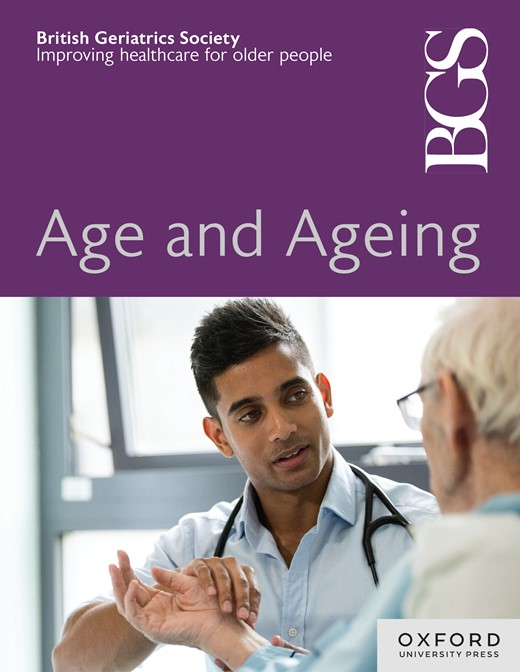3085 COVID-19后老年人与未患COVID-19的老年人在老年门诊就诊的功能
IF 7.1
2区 医学
Q1 GERIATRICS & GERONTOLOGY
引用次数: 0
摘要
冠状病毒病19 (COVID-19)对个人健康产生了持久影响,特别是老年人,特别是那些有合并症的人,他们更容易患上严重和长期疾病。在老年人群中研究covid - 19后时期对于了解该疾病的长期影响具有重要意义。与感染前基线相比,COVID - 19后老年人日常生活活动(ADL)和日常生活工具活动(IADL)的功能下降结果相互矛盾。这项研究旨在比较COVID - 19感染幸存的老年人与从未检测出COVID - 19阳性的老年人的功能。方法采用横断面观察性研究。主要目的是比较两组患者的功能,这两组患者在COVID - 19后和从未检测出COVID - 19阳性。两组都通过问卷进行了详细的评估,其中包括社会人口统计细节、功能评估、综合老年评估(CGA)和感染患者的COVID - 19感染细节。结果分析显示,两组患者ADL中位数(20 vs 20, p值= 0.684)和IADL评分(5 vs 5, p值= 0.181)差异无统计学意义。新冠肺炎组轻症患病率更高(70%)。在两组之间,COVID - 19组的BMI (25.90 + 4.45 vs 23.32 + 3.62, p值= 0.002)和教育程度(56% vs 20%, p值= 0.001)更高。在老年评估的各个领域没有显著差异。COVID - 19幸存者与从未患过COVID - 19的人的功能没有显着差异。在所有变量中,较高的身体质量指数(BMI)和高等教育程度与COVID - 19感染显著相关。本文章由计算机程序翻译,如有差异,请以英文原文为准。
3085 Functionality in post-COVID-19 older adults vs older adults who have not suffered from COVID-19 attending geriatric OPD
Introduction Coronavirus disease 19 (COVID-19) has had lasting effects on the health of individuals, particularly older adults especially those with comorbidities, who are more vulnerable to severe and long-term illness. Studying the post-COVID 19 period in the older population is relevant for understanding the long-term effects of the disease. There have been conflicting results on functional decline in Activities of Daily Living (ADL) and Instrumental Activities of Daily Living (IADL) in post COVID 19 older adults compared to their pre-infection baseline. This study aimed to compare functionality in older people who have survived COVID 19 infection vs those who have never tested positive for COVID 19. Method This study was a cross-sectional observational study. The primary objective was to compare functionality in the two groups, post COVID 19 and never tested positive for COVID 19. Both groups underwent detailed assessment via questionnaire which included socio-demographic details, functionality assessment, Comprehensive Geriatric Assessment (CGA) and details regarding COVID 19 infection in those who suffered from the infection. Results Analysis showed that both groups had no significant differences in median ADL (20 vs 20, p-value = 0.684) or IADL scores (5 vs 5, p-value = 0.181). The COVID 19 group had a higher prevalence of mild cases (70%). Between the two groups, the COVID 19 group had higher BMI (25.90 + 4.45 vs 23.32 + 3.62, p-value = 0.002) and education status (56% vs 20% graduate p-value = 0.001). There were no significant differences in the various domains on Geriatric assessment. Conclusion Functionality did not differ significantly in the COVID 19 survivors vs those who never suffered from COVID 19. Of all the variables, higher Body Mass Index (BMI) and higher education status were associated considerably with COVID 19 infection.
求助全文
通过发布文献求助,成功后即可免费获取论文全文。
去求助
来源期刊

Age and ageing
医学-老年医学
CiteScore
9.20
自引率
6.00%
发文量
796
审稿时长
4-8 weeks
期刊介绍:
Age and Ageing is an international journal publishing refereed original articles and commissioned reviews on geriatric medicine and gerontology. Its range includes research on ageing and clinical, epidemiological, and psychological aspects of later life.
 求助内容:
求助内容: 应助结果提醒方式:
应助结果提醒方式:


